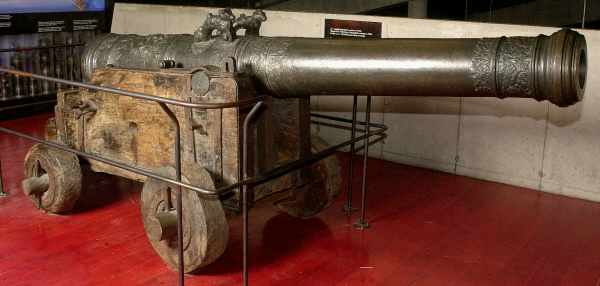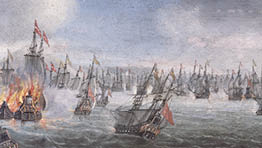
Essays – if you would like to know more
Are you particularly interested in the marine archeological studies of the shipwrecks Swarte Arent, Delmenhorst and Lindormen, in the conflict between Denmark and Sweden that extends over several hundred years or perhaps the strategy of waging war at sea?
The museum has asked experts from Denmark and abroad to contribute with essays that elaborate on 17th century geopolitical perspectives in Europe, details of shipbuilding and warfare and what the shipwrecks can tell us today.
The essays will be added continuously throughout the exhibition period from April 29. 2021 - March 1. 2022.
There are two essays presented in English, the remaining will be post on the Danish part of the website.
Essays
Fight, fire and disaster – the loss of the warship Lindormen in 1644 and its recent rediscovery
Senior researcher, Dr. Martin Segschneider, Head of Coastal and Maritime Archaeology at Lower Saxony Institute for Historical Coastal Research, Wilhelmshaven
For centuries, Fehmarn Belt has been an important strait and waterway. Several sea battles took place here in the 17th and 18th centuries, not least on the 13th October 1644, when a Danish command of 17 ships clashed with a fleet of 37 Swedish and Dutch ships.
The historical background for this confrontation was the Torstenson Feud (1643-1645), a struggle for economic and political supremacy in the Western Baltic Sea. The Torstenson Feud is best understood as part of the European Thirty Years’ War (1618-1648).
During the fierce engagement, many Danish ships were conquered. Other Danish ships were attacked by fire ships, and thereby ignited and subsequently lost. One of these lost ships was Lindormen, a three-master built in 1626, in Itzehoe. With a length of 38.2 m and a width of 8.8 m, the man-o`-war carried 38 guns and had 200 to 300 men aboard.
Any knowledge of the position, where Lindormen sank, vanished through the centuries. However, in 2006/2007, underwater surveying within an obstacle zone approximately three kilometres north of Puttgarden produced the first hint that this could be an important historic wreck site.
» Would you like to learn more about about the excavation of Lindormen - read the full essay.

Experimental firing trials with a reconstructed 17th-century cannon
Dr. Fred Hocker, Director of Research, Vasa Museum in Stockholm
In 2012-2014, the Vasa Museum test fired a common type of cannon developed in the 1620s; similar guns were used in the war of 1643-1644. The project investigated conventional ballistic properties, such as range, accuracy and effect, but also looked for data that would help us to understand the human experience of using heavy artillery on board warships.
By: Aoife Daly, Associate Professor, The Saxo Institute, University of Copenhagen.
Niklas Eriksson, Associate Professor, Dept of Archaeology and Classical Studies, Stockholm University.
Jim Hansson, Curator, Archaeology Unit, Swedish National Maritime and Transport Museums.
Ten valuable prizes were taken by the Swedes during the battle of Femern, including Neptunus and Tu Løver. These prizes were incorporated into the Swedish navy and appear in the written sources from the following years. In 1658 – thirty years after the keel of this ship was stretched at Balfours shipyard in Christianshavn, Tu Løver appears in the sources as a fireship. This was usually one of the last chapters in the story of a sailing warship’s life and means that the majority of the ship’s guns were removed, and the hull was filled with inflammable material and aimed to set enemy ships on fire. However, Tu Løver did not end up in flames, and the following year the Swedish Admiralty had other plans for the ageing hull.
![[Translate to english:] Udstillingen 'I Røg og Brand' på Vikingeskibsmuseet](/frontend/Grafik/rog-og-brand-lille-side-banner-07.jpg)
![[Translate to english:] Udstillingen 'I Røg og Brand' på Vikingeskibsmuseet](/frontend/Grafik/rog-og-brand-lille-side-banner-04.jpg)
